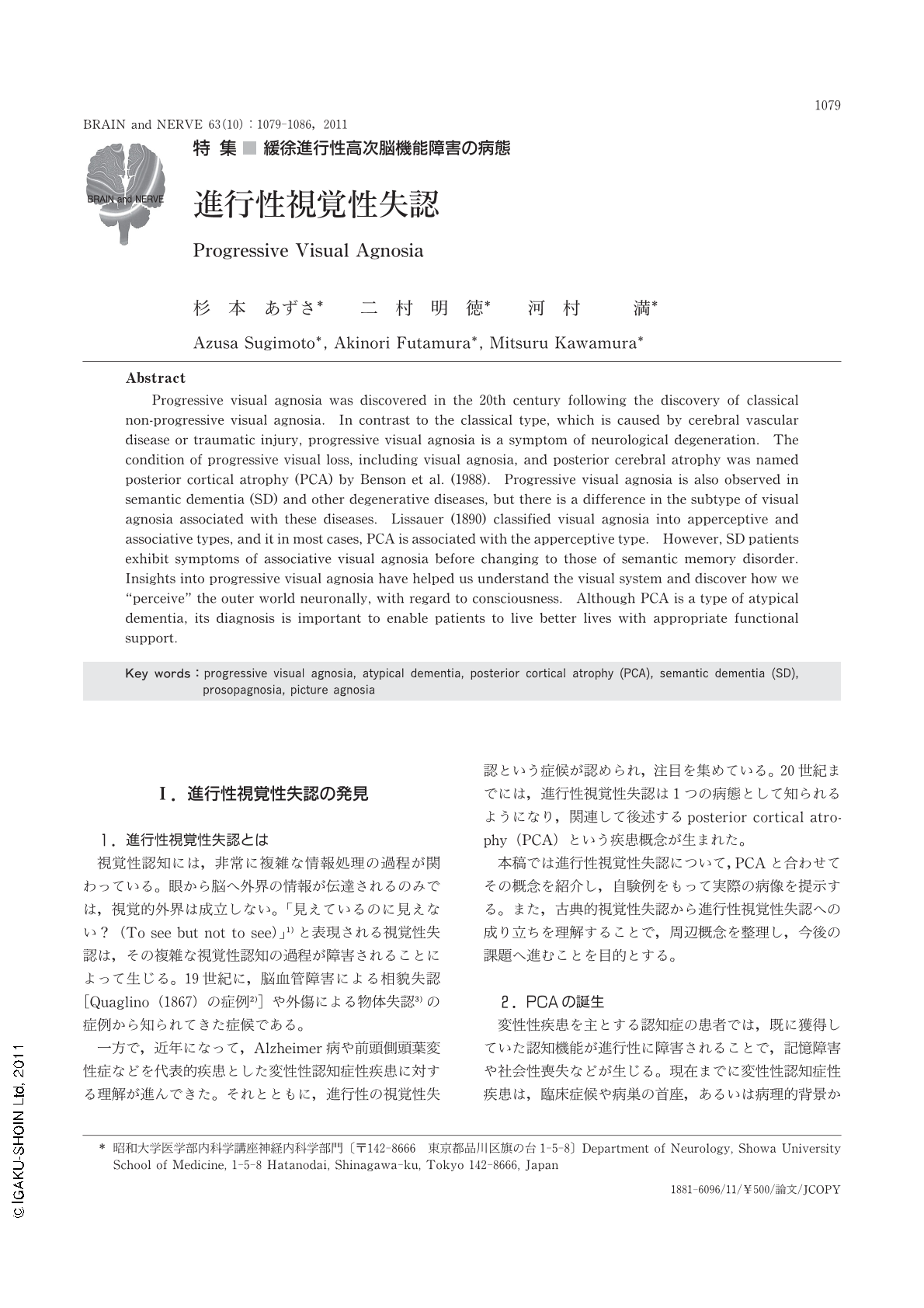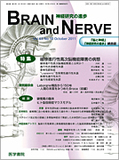Japanese
English
- 有料閲覧
- Abstract 文献概要
- 1ページ目 Look Inside
- 参考文献 Reference
Ⅰ.進行性視覚性失認の発見
1.進行性視覚性失認とは
視覚性認知には,非常に複雑な情報処理の過程が関わっている。眼から脳へ外界の情報が伝達されるのみでは,視覚的外界は成立しない。「見えているのに見えない?(To see but not to see)」1)と表現される視覚性失認は,その複雑な視覚性認知の過程が障害されることによって生じる。19世紀に,脳血管障害による相貌失認[Quaglino(1867)の症例2)]や外傷による物体失認3)の症例から知られてきた症候である。
一方で,近年になって,Alzheimer病や前頭側頭葉変性症などを代表的疾患とした変性性認知症性疾患に対する理解が進んできた。それとともに,進行性の視覚性失認という症候が認められ,注目を集めている。20世紀までには,進行性視覚性失認は1つの病態として知られるようになり,関連して後述するposterior cortical atrophy(PCA)という疾患概念が生まれた。
Abstract
Progressive visual agnosia was discovered in the 20th century following the discovery of classical non-progressive visual agnosia. In contrast to the classical type,which is caused by cerebral vascular disease or traumatic injury,progressive visual agnosia is a symptom of neurological degeneration. The condition of progressive visual loss,including visual agnosia,and posterior cerebral atrophy was named posterior cortical atrophy (PCA) by Benson et al. (1988). Progressive visual agnosia is also observed in semantic dementia (SD) and other degenerative diseases,but there is a difference in the subtype of visual agnosia associated with these diseases. Lissauer (1890) classified visual agnosia into apperceptive and associative types,and it in most cases,PCA is associated with the apperceptive type. However,SD patients exhibit symptoms of associative visual agnosia before changing to those of semantic memory disorder. Insights into progressive visual agnosia have helped us understand the visual system and discover how we "perceive" the outer world neuronally,with regard to consciousness. Although PCA is a type of atypical dementia,its diagnosis is important to enable patients to live better lives with appropriate functional support.

Copyright © 2011, Igaku-Shoin Ltd. All rights reserved.


